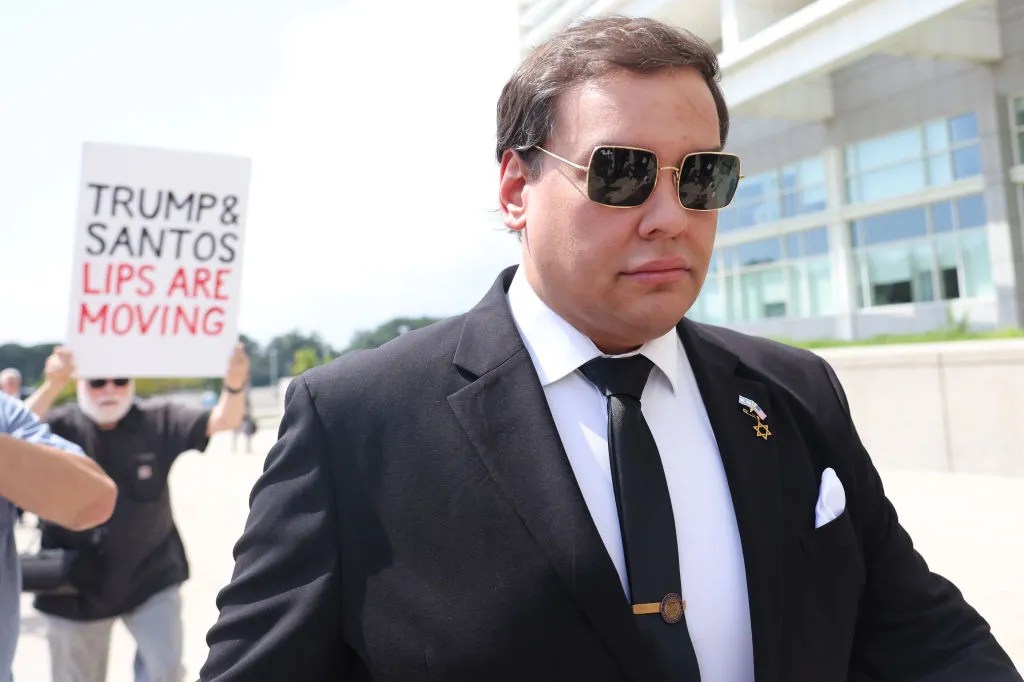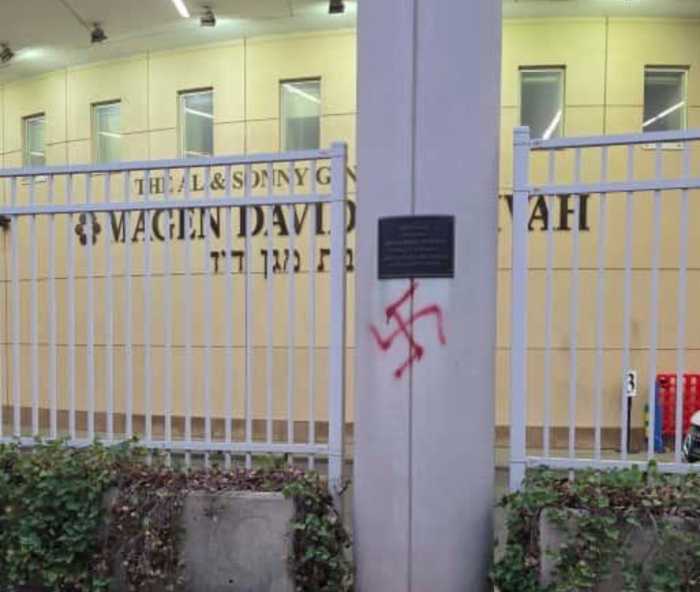BY ANDY HUMM | The Fifth Avenue St. Patrick’s Day Parade was held for the 251st time on March 17 — and protested by Irish Queers for the 21st time. Officially dedicated to “veterans of our armed forces,” the parade drew demonstrators decrying the presence of uniformed city police who march in a “private, religious, anti-gay procession year after year.”
The Irish Lesbian and Gay Organization, a now defunct group of LGBT Irish immigrants, applied to march in 1991, setting the stage for annual denials of any gay group hoping to march down Fifth Avenue under its own banner like all other contingents in the parade. While most people, including spectators, think of the parade as simply a celebration of Irish heritage, the St. Patrick’s Day Parade Committee declared that the event was a Catholic religious procession and won the right in court to exclude groups it deemed contrary to their beliefs.
A committee member four years ago said that letting gays march in the parade would be like letting neo-Nazis into the Salute to Israel Day Parade or the KKK into a parade for African Americans.
The Gay and Lesbian Against Defamation (GLAAD) announced a new protest this year, calling on WNBC-TV to drop its annual telecast of the parade as long as its “discriminatory practices remain in place,” said Herndon Graddick, the group’s vice president of programs and communications. In a blog post, Aaron McQuade, GLAAD’s director of news and field media, wrote that the station is “airing — and thereby undoubtedly financially supporting this discriminatory event.” This year’s grand marshal was Francis X. Comerford, chief revenue officer and president of commercial operations for NBC-owned television stations.
Dawn Rowan, director of communications for WNBC, issued a statement responding to GLAAD, saying, “WNBC is fully committed to upholding our principles of diversity and inclusion and would not align ourselves with an organization that practices discrimination of any kind. Anyone from the LGBT community is free to march in the New York St. Patrick’s Day Parade as long as they participate as part of a group that has been approved by the parade organizers.”
Emmaia Gelman of Irish Queers responded, “There is no veil over the blatant anti-gay bigotry of the parade. Parade organizers have pronounced it, elected officials massively boycott it, and queers — Irish and otherwise — have been shouting our outrage for 20 years. The excuse that anyone can march as long as they’re closeted is a despicable dodge used by those who want to participate while still claiming to ‘uphold diversity.’ But it’s good that the issue is back on the table for NBC and Comcast, and we expect they’ll honor their commitment not to support such homophobia.”
Gay journalist Mike Signorile wrote on Huffington Post that “with Comcast now in charge after the controversial merger with NBC was finalized, 2012 could be the last year in which gays are excluded — or the last year in which NBC is involved in the parade.” That’s because Comcast CEO Brian Roberts committed in Congressional hearings on the merger to “adhere to diversity in every aspect of the company’s business dealings,” Signorile wrote.
It is hard to ascertain the financial arrangement between WNBC and the St. Patrick’s Day Committee. Rowan of WNBC said they don’t comment on such things. While some major events sell the broadcast rights to a TV outlet, an official of the parade committee shooing me away from an on-the-street interview by WNBC correspondent Tom Llamas, said, “They work for us. We own the four hours of the telecast.” The official would not give his name.
Regarding the WNBC reporters who provide the parade coverage, which is produced by an independent company, Rowan wrote, “As journalists, they cover the parade objectively and with the utmost journalistic integrity.” That may be true for the coverage done on the 11 o’clock news, but the four-hour live telecast cannot be described as anything but a lengthy, puff-piece paean to the parade. Indeed, Llamas told Cardinal Timothy Dolan during an interview that he twice donated to the St. Patrick’s Cathedral restoration fund and host Jane Hanson kissed and praised grand marshal Comerford — not typical objective reporting.
The parade claims to have 150,000 marchers and millions of spectators. There were about 25 protestors from Irish Queers at Fifth Avenue and 57th Street, but they were joined intermittently by young people, mostly non-gay, who came to see the parade but were appalled when they learned that gay Irish groups are prohibited from participating.
Andy Reeves, 21, of East Quogue, Long Island, happened upon the protest with his girlfriend and decided to pick up a sign and join. Why was he against the exclusion of gay groups? “It’s hate,” he said, “and I don’t like it. Everyone is equal.” Why did he come to the parade? “I’m about to leave for the Marines,” he said. Why’d he join the Marines? “To fight for my country. We all enjoy these freedoms, but no one does anything about it.”
Most progressive politicians have resolutely boycotted the parade since the 1991 exclusion. City Council Speaker Christine Quinn once got arrested at a massive protest over the exclusion of Irish gay groups. She still boycotts the parade, but no longer attends the protest.
About ten City Council members marched behind the Council banner in the parade, including Queens Democrat Peter Vallone, Jr. and his namesake father, the former speaker who said their contingent was growing. Councilman Domenic Recchia, Jr., a Brooklyn Democrat who is contemplating a run for city comptroller, marched in the parade but said “it should be inclusive.” Which it is not. “Someday we’ll be able to work it out,” he said — a statement similar to that of US Senator Chuck Schumer, who again broke the boycott this year.
Mayor Michael Bloomberg marched with Police Commissioner Ray Kelly, himself a former grand marshal of the anti-gay parade. Former Police Commissioner Bill Bratton and wife Rikki Klieman watched the parade from the sidewalk in front of St. Patrick’s Cathedral. Asked how he felt about the exclusion of gay groups he said, “It’s a shame that they do that. Hopefully it will end soon. It’ll be one of the last barricades to fall.”
While mayoral hopefuls Bill de Blasio, the public advocate, and John Liu, the comptroller, did not march, dark horse candidate Tom Allon, a newspaper publisher, did and wrote how he was “proud” to do so on Huffington Post. While it is “regrettable” that gay people are excluded, it is the “right” of organizers to keep them out, he wrote. Informed by Crain’s that it is gay groups not people who are excluded, Allon wrote them that “makes it even more of a hypocritical position to boycott. There is no reason people need to march with a banner at any parade.”
New York parades, including St. Patrick’s, are replete with identifying banners.
Allon criticized Quinn as “hypocritical” for boycotting the parade but attending the St. Patrick’s Day Mass — as he did — led by Dolan, who, he said, “opposes homosexuality.”
Allon wrote he was marching in honor of people like his “late mentor, Frank McCourt,” the teacher and writer who wrote “Angela’s Ashes.” But Frank hated the Fifth Avenue parade, and his brother Malachy McCourt has been a regular participant in the annual gay picket against it. Malachy has been a grand marshal of the inclusive St. Pat’s for All Parade in Queens, launched more than a decade ago in response to the Fifth Avenue event’s discrimination. In a documentary on St. Patrick, Frank McCourt said, “If Patrick were to come back and someone was to say, ‘I have a little balcony on Fifth Avenue. You want to see the parade?,’ he’d jump off the balcony! He’d say, ‘Stop! This is not what I was preaching at all! Now disperse. Go home and pray and help the poor.’”
The parade is mostly school marching bands and uniformed police, firefighters, and military personnel — along with Irish county contingents of civilians — most marching with signifying banners. It is also, however, highly regimented, with any sign of creativity — even a bright green hat — banned. The spectators, on the other hand, are diverse and colorful and often surprised to hear that gay groups are still excluded.
A group called Artists for Inclusion, a project of the Kostume Kult Arts Collective, is also banned. Its members demonstrated at 59th Street, a couple of blocks above the Irish Queers. “We’re not free unless we can express our creativity,” said Rebecca Beiber from the group.
“You can’t be yourself in this parade,” said Christopher Hardwick, dressed as a leprechaun. “No costumes are allowed.” So they held up signs such as “BORING” and “Zzzzzzzzz.”
Gelman said, “This is not an Irish event for New Yorkers. The organizers are staking it out as a Catholic procession. It is clearly inappropriate for representatives of government agencies and officials to be parading in uniform. Irish Queers is contemplating legal action to stop city personnel from marching in uniform in this parade.”



































